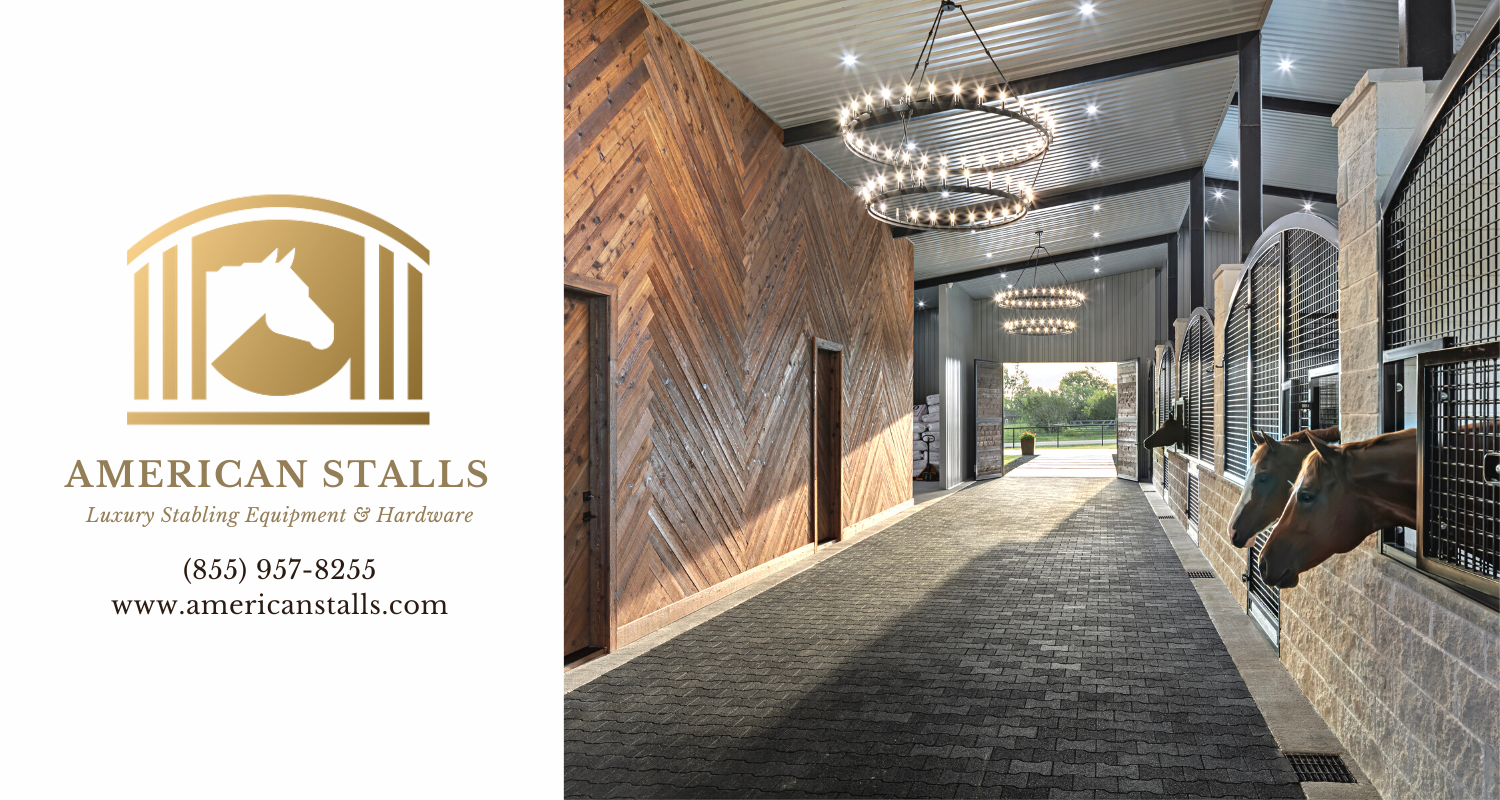How wide should your barn aisle be? What materials should you use? These are just a couple of key questions to ask yourself when planning your barn aisle.
Creating a healthy and safe barn environment is a number one priority for equestrians. When it comes to building the right barn for your horses, consider every detail – especially your aisle. This helpful blog post brought to you by American Stalls covers simple tips to consider when thinking about your barn’s aisle way.
Wider is Better

Invest in a wide aisle, this is a tip for anyone building a new barn or planning future construction. You might spend a little more money on the barn due to materials used, but in the long run it will make your space more efficient, safer and eye appealing.
Narrow aisles are often seen in older barns and designs. American Stalls recommends a minimum aisle width of 10′ to 12′ for private facilities. For larger boarding facilities and show venues, a 14′ to 16′ width is a better choice. The width of your aisle should be determined on your barn’s overall size, types of horses kept and the users of the facility. Larger barns might want a wide space that can fit a tractor or or large feed carts, while leaving plenty of room for horses to pass safely.
Keep Clutter to a Minimum

Clutter easily accumulates when cleaning tools, grooming boxes, blankets and excess tack finds its way in front of stalls. If you are building a new barn, plan for a tack room nearby or add built-in storage to your wash or grooming stalls. If you have an older space and need tack boxes in front of your stalls, consider purchasing matching trunks.
Carefully placed blanket bars and bridle hooks are an easy and elegant way to hang items on stall fronts. Keep clutter to a minimum and only hang a halter or necessary items. The above sliding door by American Stalls offers a simple bar to hang a couple items.
Invest in Quality Flooring & Drainage

Poorly laid concrete or old rubber mats can be slippery and dangerous for horses walking down the aisle, especially after coming in from the rain. Your horse barn’s flooring is crucial to creating a safe environment for both horses and human handlers. The flooring in your barn should be level and provide traction. American Stalls recommends either rubber pavers or interlocking rubber mats. Straight-edge rubber mats move and shift over time. Rubber pavers and interlocking mats will maintain their shape while offering your barn plenty of traction during wet and dry conditions. You can save money on pavers by lining them down the center and keep a foot of concrete on each side.
Finally, make sure you have proper drainage in place. Whether you have concrete floors or pavers, it’s important to place multiple drains along the aisle and any cross aisles. This will ensure your floor is always dry and easy to keep clean.
Keep it Bright

If you’re planning a new barn, tall ceilings, skylights, ample side and overhead lights are a must. Visibility is key in the barn – both during the day and night time. For this reason, American Stalls always recommend agriculturally-rated LED lights along your barn’s aisle way. Windows and/or dutch doors are a wonderful way to bring in more natural light to stalls from the outside. Work with a general contractor, builder, or architect who can add skylights to your roofing. This added sunlight not only improves visibility, but also promotes a healthy and clean environment.
For more great blog posts from American Stalls be sure to read Tips for Finding the Right Contractor for Your Barn, New! Portable Miniature Horse Stalls from American Stalls and The Benefits of Mesh Stall Fronts on Stable Style.






